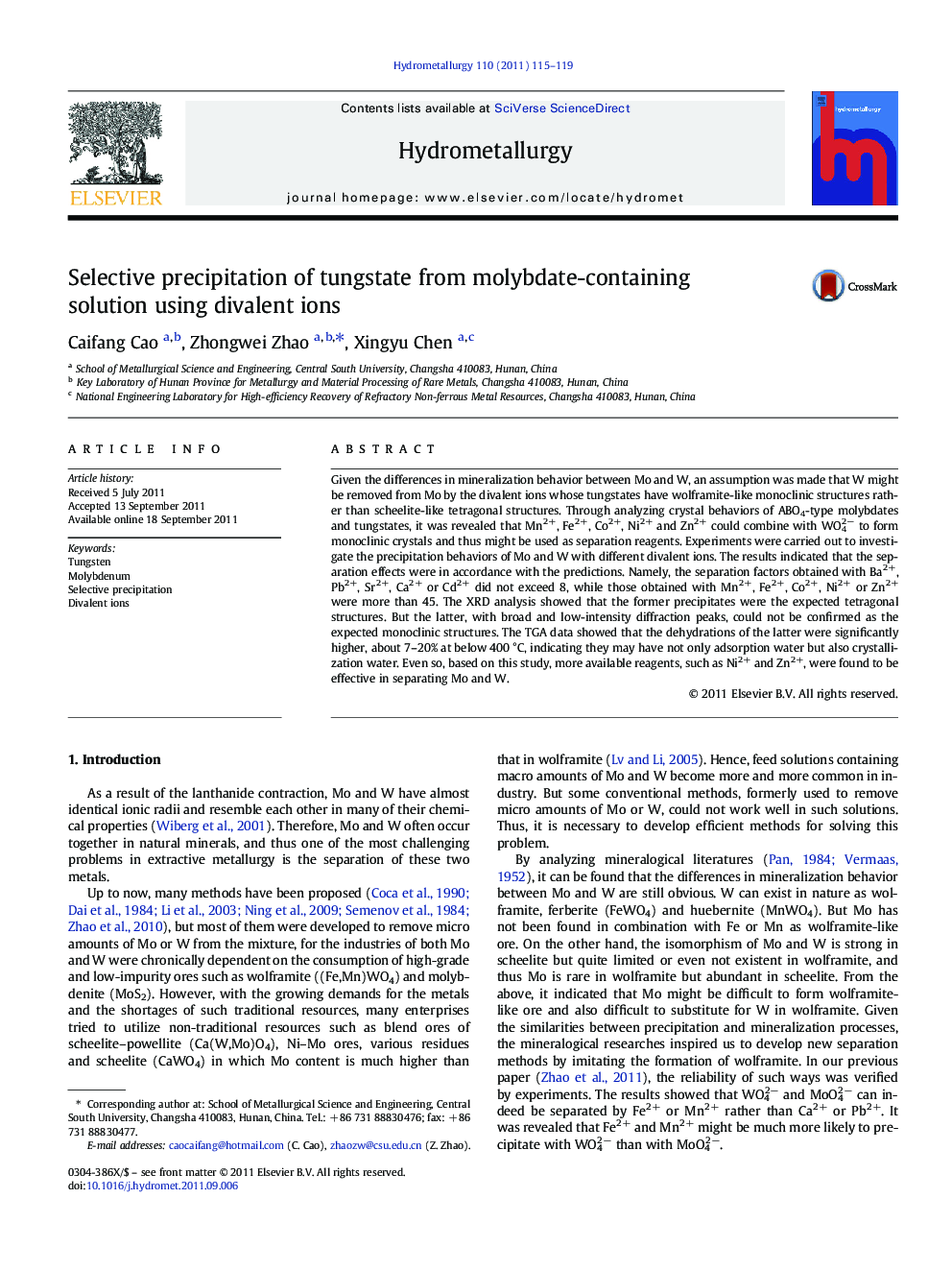| کد مقاله | کد نشریه | سال انتشار | مقاله انگلیسی | نسخه تمام متن |
|---|---|---|---|---|
| 212629 | 462058 | 2011 | 5 صفحه PDF | دانلود رایگان |

Given the differences in mineralization behavior between Mo and W, an assumption was made that W might be removed from Mo by the divalent ions whose tungstates have wolframite-like monoclinic structures rather than scheelite-like tetragonal structures. Through analyzing crystal behaviors of ABO4-type molybdates and tungstates, it was revealed that Mn2+, Fe2+, Co2+, Ni2+ and Zn2+ could combine with WO42− to form monoclinic crystals and thus might be used as separation reagents. Experiments were carried out to investigate the precipitation behaviors of Mo and W with different divalent ions. The results indicated that the separation effects were in accordance with the predictions. Namely, the separation factors obtained with Ba2+, Pb2+, Sr2+, Ca2+ or Cd2+ did not exceed 8, while those obtained with Mn2+, Fe2+, Co2+, Ni2+ or Zn2+ were more than 45. The XRD analysis showed that the former precipitates were the expected tetragonal structures. But the latter, with broad and low-intensity diffraction peaks, could not be confirmed as the expected monoclinic structures. The TGA data showed that the dehydrations of the latter were significantly higher, about 7–20% at below 400 °C, indicating they may have not only adsorption water but also crystallization water. Even so, based on this study, more available reagents, such as Ni2+ and Zn2+, were found to be effective in separating Mo and W.
► An assumption was made that W might be removed by cations whose tungstates have wolframite-like structures.
► Experiments were carried out to verify the reliability of the assumption.
► Separation factors obtained with Ba2+, Pb2+, Sr2+, Ca2+ or Cd2+ did not exceed 8.
► Separation factors obtained with Mn2+, Fe2+, Co2+, Ni2+ or Zn2+ were more than 45.
► More available reagents were found to be effective in separating Mo and W.
Journal: Hydrometallurgy - Volume 110, Issues 1–4, December 2011, Pages 115–119